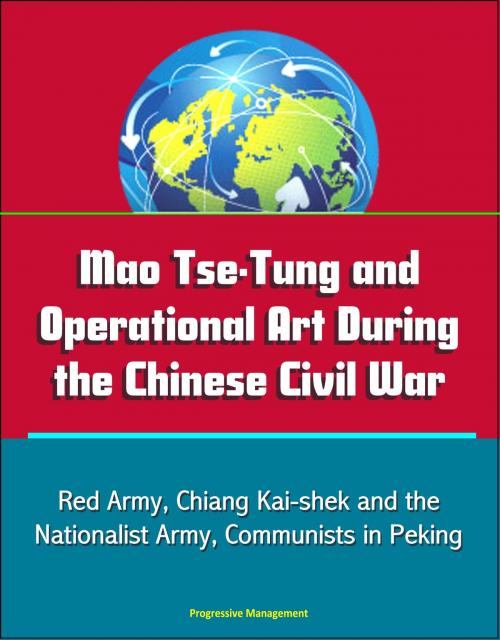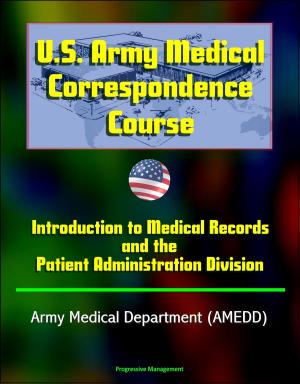Mao Tse-Tung and Operational Art During the Chinese Civil War: Red Army, Chiang Kai-shek and the Nationalist Army, Communists in Peking
Nonfiction, History, Asian, China| Author: | Progressive Management | ISBN: | 9781310949272 |
| Publisher: | Progressive Management | Publication: | June 2, 2014 |
| Imprint: | Smashwords Edition | Language: | English |
| Author: | Progressive Management |
| ISBN: | 9781310949272 |
| Publisher: | Progressive Management |
| Publication: | June 2, 2014 |
| Imprint: | Smashwords Edition |
| Language: | English |
This monograph examines the nature of operational art during the third and final phase of the Chinese Civil War, 1945-1949. During this period Mao Tse-Tung and the Red Army fought Chiang Kai-shek and the Nationalist Army for the military and political control of China. The purpose of this monograph is to examine and analyze Mao Tse-Tung as an operational level commander during the third phase of the Chinese Civil War, 1945-1949. It investigates the development and practice of Mao's theory of revolutionary war within the context of operational art. This monograph focuses on the controlling research question: Was Mao Tse-Tung practicing operational art during the third phase of the Chinese Civil War, 1945-1949?
To answer this question the monograph focuses on five areas. First, this paper examines the contemporary theory of operational art. This first section establishes the theoretical foundation for examining the controlling research question. This section introduces and examines the development of operational art. This includes a discussion of military strategy and the operational challenge of orchestrating the ends, ways, and means of national power into successful military operations. Finally, this section identifies and defines the principal components of operational design.
The second section presents a brief introduction to the military history of the third phase of the Chinese Civil War. Between 1945 to 1949 the Nationalist and Communist Chinese fought a large scale struggle for control of mainland China. During this period Mao was able to fully implement his theory against his Nationalist opponents. The third section analyzes this period of the Chinese Civil War in terms of operational art. It answers the supporting research question; Was operational art used during this phase of the Chinese Civil War ? In addition, this section examines the Communist command and control structure to determine whether or not Mao was in a position from which he could directly plan the operations of the Communist field armies.
The fifth section briefly examines this period of the Chinese Civil War using James Schneider's eight key attributes of operational art in an effort to solidify the answer to the supporting research question; Was operational art used during this phase of the Chinese Civil War? Finally, in the concluding section, this monograph uses the weight of evidence from the analysis contained in the previous sections to answer the controlling research question. The purpose is to determine whether or not Mao deserves the title of operational artist for the design and conduct of Communist operations against the Nationalist forces of Chaing Kai-shek during the third phase of the Chinese Civil War.
This monograph examines the nature of operational art during the third and final phase of the Chinese Civil War, 1945-1949. During this period Mao Tse-Tung and the Red Army fought Chiang Kai-shek and the Nationalist Army for the military and political control of China. The purpose of this monograph is to examine and analyze Mao Tse-Tung as an operational level commander during the third phase of the Chinese Civil War, 1945-1949. It investigates the development and practice of Mao's theory of revolutionary war within the context of operational art. This monograph focuses on the controlling research question: Was Mao Tse-Tung practicing operational art during the third phase of the Chinese Civil War, 1945-1949?
To answer this question the monograph focuses on five areas. First, this paper examines the contemporary theory of operational art. This first section establishes the theoretical foundation for examining the controlling research question. This section introduces and examines the development of operational art. This includes a discussion of military strategy and the operational challenge of orchestrating the ends, ways, and means of national power into successful military operations. Finally, this section identifies and defines the principal components of operational design.
The second section presents a brief introduction to the military history of the third phase of the Chinese Civil War. Between 1945 to 1949 the Nationalist and Communist Chinese fought a large scale struggle for control of mainland China. During this period Mao was able to fully implement his theory against his Nationalist opponents. The third section analyzes this period of the Chinese Civil War in terms of operational art. It answers the supporting research question; Was operational art used during this phase of the Chinese Civil War ? In addition, this section examines the Communist command and control structure to determine whether or not Mao was in a position from which he could directly plan the operations of the Communist field armies.
The fifth section briefly examines this period of the Chinese Civil War using James Schneider's eight key attributes of operational art in an effort to solidify the answer to the supporting research question; Was operational art used during this phase of the Chinese Civil War? Finally, in the concluding section, this monograph uses the weight of evidence from the analysis contained in the previous sections to answer the controlling research question. The purpose is to determine whether or not Mao deserves the title of operational artist for the design and conduct of Communist operations against the Nationalist forces of Chaing Kai-shek during the third phase of the Chinese Civil War.















